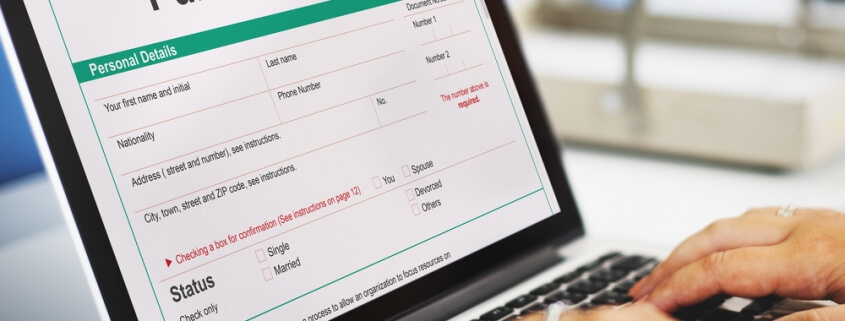Purchase Order Financing vs. Factoring
Last Updated February 28, 2024
Just about every business will run into issues with available funds at some point. While intermittent cash flow problems are normal, particularly for growing businesses, it’s important to stay one step ahead by securing financing. However, what if you run a small business and can’t qualify for a traditional bank loan or line of credit? Luckily, there are two alternatives: purchase order financing and invoice factoring.
These alternatives are sought after by small business owners because they don’t require high business credit scores to qualify. But it’s important to understand the differences between the two.
Purchase order financing vs. invoice factoring can easily be confused with one another and usually have similar borrower profiles, so let’s break down each of these lending options designed explicitly for small business.
Purchase Order Financing
A company has the option to secure a loan with purchase order financing (PO financing). This practice allows the company to buy the materials necessary to start the job a client has ordered. This kind of financing is common among importers/exporters, distributors, manufacturers, wholesalers, and contractors.
For instance, a manufacturer receives a large order from a new customer. The order is bigger than any the company has received before and will require more funding than the manufacturer has on hand. It would be difficult to secure a traditional bank loan since the manufacturer cannot demonstrate experience with an order of this size.
Purchase order financing would be ideal for this company. The lender accepts the verified purchase order and directly pays the supplier, who then delivers the product to the customer. The manufacturer then invoices the customer, who pays the lender. The lender then sends the payment to the manufacturer, minus lending fees.
Invoice Factoring
Another option for small businesses in need of operational funds is invoice factoring. For this type of financing, a company trades its unpaid invoices for a loan of a comparable amount from a factoring company. The business can use the loan to continue day-to-day operations without waiting for clients to pay their bills.
This form of funding is especially common among trucking companies (where it’s called “freight factoring“), staffing agencies, janitorial services, IT consultants, landscaping companies, and other businesses that provide invoicing services after those services have been provided.
For instance, a landscaping company could use unpaid invoices to secure financing to meet payroll, purchase gasoline, and repair equipment. The factoring company, or factor, then collects the payment from the landscaper’s clients.
The primary component that lenders consider in invoice factoring is not the creditworthiness of the borrower but that of the borrower’s customers, the entities who owe the invoice payments. Therefore, this form of lending is generally used for B2B invoices only.
Related: Invoice Factoring by Industry
Pros and Cons of Purchase Order Financing
Like every alternative lending option, PO financing comes with advantages and disadvantages. Let’s take a look at what your business can gain, and potentially forfeit, by using purchasing order financing.
| Pros | Cons |
| Quick access to cash | Upfront fee |
| Lender assumes collection risk | Is a short-term solution |
| Low interest (compared to other alternative financing) | Reduced customer payments because of lending fees |
| Good for small businesses | Lose communication with customer during payment process |
| Line grows with revenue | Covers strictly direct supplier expenses |
| Credit line determination can be a pro for creditworthy businesses | Reduces profit margins |
Pros:
Easy/Quick Access to Cash
Small businesses often find purchase order financing easier to secure than traditional bank loans. The funds are also usually available much more quickly, sometimes in as little as 24 hours.
Lender Assumes Collection Risk
Another advantage to purchase order financing is the fact that the lender usually takes on collection responsibility. The lender, not the small business, risks loss if customers do not make payment.
Comparatively Low Interest
Using credit cards to pay for upfront materials involves hefty interest rates. Even traditional bank loans can include a substantial price tag in the form of interest. Purchase order financing bypasses this expense. Plus, instead of monthly loan repayments that quickly add up to a significant expense, purchase order financing requires that a business pay back the lender when customers fulfill their invoice payments.
Line Can Grow With Revenue
As a small business expands and increases its revenue, a purchase order financial arrangement can grow with it.
Available to Small Businesses
Unlike traditional loans, purchase order financing is much easier for a small business to secure. Even some startups are eligible for this form of funding.
Credit Line Determination
A major advantage of purchase order financing is that lenders base their decisions on the creditworthiness of a business’s clients rather than that of the company itself. This practice makes it an especially promising line of credit for new businesses.
Cons:
Upfront Fee
Most purchase order lenders require an upfront payment. This fee will be due before the customer has paid for services or products.
A Short-Term Solution
Financing individual purchase orders will definitely help your business cover an expense you otherwise wouldn’t be able to afford. However, it’s a short-term solution to what could be a prolonged problem if you can’t sort out existing cash flow concerns. Plus, PO financing won’t benefit your credit score, so even if you have a long-term arrangement with a lender, succeeding in that arrangement won’t directly benefit your chances of securing more traditional lines down the line.
Reduced Payments
One disadvantage of purchase order financing is that a small business that arranges one will not receive the full payments from customers. Lending fees will reduce these payments.
Customer Contact
Another drawback to purchase order financing is that billing will not directly occur between the business and its customers. The lender will step in as a third party for collection.
Only Covers Direct Supplier Expenses
Unlike a traditional loan, purchase order financing can only be applied to supply costs. Other expenses will require a different solution.
Requires Large Margins
Purchase order financing often requires a transaction with gross margins of 25% or higher.
Pros and Cons of Invoice Factoring
Small business owners find many benefits from selling accounts receivable to finance their business. However, like every financing option, there are a few drawbacks.
Below are the advantages and disadvantages of invoice factoring.
| Pros | Cons |
| Immediate cash flow | Fees |
| Ongoing cash flow | Low customer credit can impact qualification |
| Better chance of approval than most alternative financing methods | Lose communication with customer during payment process |
| Billing tasks are outsourced | Liable for unpaid invoices (if using recourse factoring |
| No collateral required | Factoring with independent companies instead of a bank can be risky |
Pros:
Immediate Cash Flow
A clear advantage to invoice factoring is that it provides instant funds. Traditional bank loans take much longer to put cash in the hands of small businesses.
Ongoing Cash Flow
Invoice factoring also provides an ongoing source of fund infusion. As long as a small business is issuing verifiable invoices, this source of funds is viable.
Better Chance of Approval
Invoice factoring is designed to give small businesses an increased likelihood of approval. Unlike traditional loans, this form of funding examines the credit of a business’s customers, not that of the company itself.
Outsourcing Billing Tasks
A significant advantage of invoice factoring is that it relieves a small business of much of the billing process. The lender accepts these tasks when it takes on the invoices.
No Collateral Required
With invoice factoring, small businesses in need of funds do not need to provide collateral. Do note, however, that based on the factoring company and particular aspects of your business, you may be asked to sign a personal guarantee, meaning you would have to sacrifice personal assets as collateral.
Cons:
Fees
The fees associated with invoice factoring are generally between 1-5%. This cost adds up quickly, especially as a business grows. Yet, many small business owners who choose to factor their invoices quickly realize that these fees are worth the cash flow boost.
Customer Credit
While the focus on customer credit in the approval process can be an advantage, it can also work against a small business seeking this form of financing. If a business’s customers have poor payment history, it could keep that business from qualifying for invoice billing financing.
Relinquishing Control of Invoices
When a small business takes on this form of funding, it hands over invoices to the lender. The small business no longer controls those invoices, which may be uncomfortable for some business owners.
Responsibility for Unpaid Invoices
While invoice factoring reduces the risk of bad debt, it does not eliminate it. Invoice factors are not collection agencies. If customers refuse to pay their invoices, the liability for those funds falls back on the small business.
Factoring With Independent Companies Can Be Risky
Invoice factoring is generally a fantastic financing option for small business owners looking to ease their AR responsibilities and find a solution for slow-paying customers. However, if you choose to factor with an independent company instead of a bank, it can present some risk, as these companies aren’t regulated the same way banks are.
Purchase Order Financing vs. Factoring: Which Form of Financing To Choose?
Neither alternative lending option is inherently better than the Both PO financing and invoice factoring come with inherent advantages and disadvantages, and each offers small business owners a specific kind of aid in solving their cash flow problems. Borrowers should consider that company’s specific needs when deciding between purchase order financing or invoice factoring.
A business that needs funds upfront to fulfill an order or begin a project will most likely find that purchase order financing is tailor-made for its purposes. On the other hand, a firm that requires operational funds while it waits for customers to pay their bills will benefit most from selling invoices for cash.
Either way, these forms of financing offer small businesses a more accessible and customizable solution than traditional bank loans.
FAQ
Should I choose PO financing or invoice factoring for my business?
It depends. If your business can’t afford to fulfill an order or project without outside help, you should consider purchase order financing. However, if your main problem is slow-paying customers or long payment terms, invoice factoring will prove more beneficial.
Are purchase order financing and invoice factoring unsecured?
Yes, both purchase order financing and invoice factoring are typically unsecured, meaning no collateral is required. In fact, sometimes it’s the lender who assumes risk with these financing options (this is called non-recourse factoring). However, do note that in some instances, your lender may require you to sign a personal guarantee.
Jim is the General Manager of altLINE by The Southern Bank. altLINE partners with lenders nationwide to provide invoice factoring and accounts receivable financing to their small and medium-sized business customers. altLINE is a direct bank lender and a division of The Southern Bank Company, a community bank originally founded in 1936.



